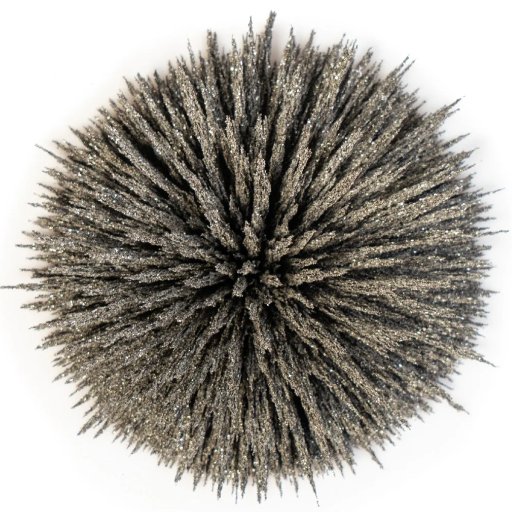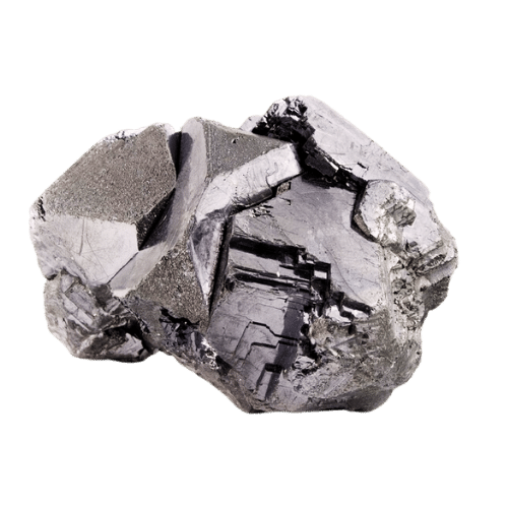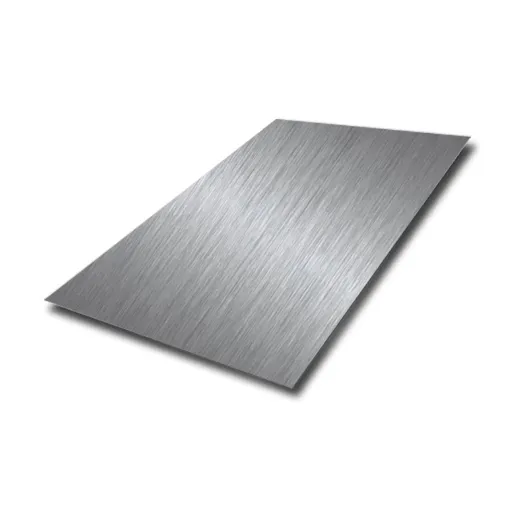Introduction to Magnetic Properties

Fundamental to the magnetic properties of a material is how electrons within the material move, how these motions are arranged to give a magnetization once a magnetic field is applied. In the same light, for instance, lead is placed as a diamagnetic material, which means in brings a very negligible or even zero effect to an external magnetic field. This derives from the fact that the atomic structure of the element in question does not contain any unpaired electrons, which are one of the preconditions for strong magnetic interactions observed in ferromagnetic or paramagnetic rails. Unlike some metals, such as iron or nickel, which are magnetic and are associated with high magnetic energy, lead, in its inert form, is rarely magnetic and has no real use in magnetically reliant applications. Recognizing this distinction allows one to appreciate why lead does not act like the majority of typical magnetic materials.
Importance of Understanding Magnetism
Magnetism is an aspect that is important in several disciplines within science and technology; this includes the physics and engineering sectors. Magnetism is the foundation of such significant technologies as electric machines, electric transformers, circuit breakers, and storage devices such as hard disks. It is also important in modern diagnostics due to the need for powerful magnetic field gradients for human imaging; most imaging techniques developed nowadays have powerful magnetic fields or gradients. Additionally, in the micro technology and micro system technology applications, there have also been many developments of magnetic materials to be used in such devices as in hard drives which can manufacture All these issues will be recognized also and a big deal of the progress will be founded with these electormagnectic interactions and it will be fondamental to have a good control of the magnetic hvad_vilej.
Overview of Metals and Magnetism
Every metal has distinctive magnetic properties that are determined by the configuration of electric charge and also the geometric distribution of atoms. Primarily, metals can be classified into diamagnetic, paramagnetic, and ferromagnetic families, the classification depending on how they exhibit magnetic behaviour when in the presence of a magnetic field. One of the most commonly studied groups of materials is the ferromagnetic materials, which include iron, cobalt, and nickel, among others, and they are distinguished by possessing high and long-lasting magnetic properties. Such materials contain unpaired electrons, whose magnetic moments align in the same direction, which leads to considerable Hysteresis.
Emerging advances in the field of conceptualised nanotechnology and material science has brought in materials that did not exist before, for example, the high performing magnetic alloy magnets known as Neodymium Iron Boron (NdFeB) and Samarium Cobalt (SmCo), that are crucial for the production of efficient and compact electric motors, generators and other advanced magnetic systems. Moreover, we can on growth of spintronics- an area that involves manipulating the spin orientation of electrons in Edison or platinum, for the development of next generation data storage and computers. These advancements speak volumes of the indispensable nature of such materials in the future of magnetism and the technological world at large.
What is Lead?

Lead, historically an ancient and ever-so-relevant element, stands at a density so clear and appealing that it is never too obvious to the eye. Despite the rare use of lead in everyday life, it has endured time due to its strength and resistance properties. In reality, lead is a dull silver-hued soft malleable component with a higher atomic number than any other element on the periodic table, namely 82. Consequently, it did not require the creation of new technology such as a vapor-resistant coating to prevent tarnish.
Physical Properties of Lead
Density
One of the most remarkable features of lead is its very high density of 11.34 g/cm³, significantly higher than that of ‘normal elements’ such as metals or nonmetals. There are several properties of this element that contribute to how it can be applied in tasks possessing higher radiation danger rates, as well as those where high levels of equilibrium need to be achieved.
Melting Point
One of its properties is a low melting point at 327.5°C (621.5°F) which further diminishes the difficulty of forming it. The made piece can almost immediately acquire the shape and structure necessary for industrial processes.
Boiling Point
There is a range of forms Lead is converted or used in because the boiling point is high at 1,749°C (3,180°F). These expanded, liquid ranges provide the basis for production and evaluation of complex metals.
Malleability and Ductility
Lead is a quiet soft, highly ductile metal which implies that it can be altered into various forms and long wires without breaking easily. The aforementioned properties explain why lead sheets and products are commonly made in various industries.
Thermal Conductivity
The thermal conduction of lead at 20°C is 35.3 W/m·K which is solid and is applicable in areas that require some measure of containment or retardation of heat propagation.
Corrosion Resistance
Oxidation of lead inhibits further corrosion of the metal once the lead is exposed to air. By design, oxide films are characteristic of the effect of a very low to mid-level concentration of a chemical on the metal surface. Regardless of the material’s age, a high level of oxygen standoff can cause the wood or other materials to char.
Chemical Properties of Lead
Atomic Structure
Lead (Pb) with an atomic number of 82 and an atomic mass of 207.2 u is defined as an fcc metal. The FCC structure of lead is tending to develop its high mechanical properties, such as malleability and density.
Oxidation States
Lead is divalent most of the time, but it may also exist with an oxidation number of +4. In general, lead tends to stay in the +2 oxidation state. However, this can be changed with various compounds such as PbO₂, better known as lead dioxide, where lead is in the +4 oxidation state. There are some properties of polymorphism in the states of oxidation, which causes a lot of variation in its chemical behaviour.
Reaction with Acids
Lead is also found to have no great affinity for acids as it quickly forms insoluble protective coats that prevent lead from reacting with the acid. It is known that when lead is introduced in hydrochloric acid (HCl), certain circumstances cause the formation of Pb(II) chloride (PbCl₂) which is a less reactive substance than lead. Rusty lead is however easily attacked by nitric acid (HNO₃) in the presence of air producing lead nitrate (Pb(NO₃)₂) and hydrogen.
Reaction with Oxygen
Upon heating with air, lead reacts with oxygen to produce a yellow or red oxide. Procedures can also be adapted to further oxidize this oxide with an abundance of oxygen to form lead (IV) oxide (PbO₂) at elevated temperatures.
Toxicity and Bioaccumulation
Lead is very poisonous because it has the capacity to interfere with metabolism by binding to proteins which in turn compromise optimal enzymatic functions of the body. As well, it accumulates in organisms and biomes- its adverse impacts on the environment and health cannot be ignored.
Solubility
Lead is essentially insoluble in water, although it selectively dissolves in acidic or basic media. It reacts with acetic acid, for instance, to give rise to soluble lead acetate Pb(CH₃COO)₂.
Why Lead is Not Magnetic?

Unlike many other metals, lead is nonmagnetic due to its diamagnetism. The diamagnetic materials are materials that generate a weak magnet opposing this material in an external magnetic field hence, they are repelled by magnets rather than pulled by them. This is because the atomic structure of lead does not possess the unpaired electrons that are required for a strong magnetism to be established. Unlike metals such as iron which have high magnetic properties, lead does not carry magnetism in the long run and does not show any significant relations with magnetic fields at all.
Scientific Explanation of Non-Magnetism
As for the case of materials like lead, understanding the lack of considerable physical magnetic properties can be shown at a higher plane, by studying their electron distribution in atomic orbitals and some aspects of quantum mechanics that govern physical structure of atoms. It is the electronic configuration, more specifically the number of free electrons in the conduction band, which is responsible for the presence of magnetism. In other words, the presence of unpaired electrons in the conduction band results into strong magnetic properties. These magnetic moments remain permanent in the presence of an external field, which enforces the spins to align parallel to the field. These materials, which exhibit such types of magnetism, are called Ferromagnetic Materials, which also abound in nature and are those like iron, cobalt, to mention but a few, all of which possess partially filled d-orbitals.
When it comes to acoustics, diamagnetic materials have the specific property that they develop no magnetic field of their own. This is due to the following reasons: first, the substances have all their electrons in pairs, according to the Pauli Exclusion Principle, and secondly, the spins of the paired electrons are opposite, which neutralizes each other, and the material experiences cancellation due to such reasons. The operation of diamagnetic materials is in the orbiting electrons, which, upon jumping from one ring to the next, induce currents and create a reverse magnetic field. These processes may be more efficient when it comes to the inclination of surfaces of diamagnetic materials away from magnetic fields.
Atomic Structure and Unpaired Electrons
Moreover, the chemistry and physics of magnetism often refer to the lateral configuration of a particular element’s electrons, which also depends on the unpaired electrons. Electrons are more organized at the sub-atomic level according to several rules that they should maximize the number of unpaired electrons in case they have more than one electron in degenerate orbitals, if necessary, all in order to reduce electron-electron repulsion, and one of which is Hund’s Rule. The presence of these unpaired electrons and how they are distributed in an element has also a role in determining diamagnetism, paramagnetism, and ferromagnetism among other magnetic effects.
An example is when thinking of transition metals (such as iron appxo Fe and cobalt appxo Co). Here, there is a lot of magnetic activity which is attributable to the presence of d orbitals with partially filled electrons, mainly those with unpaired states. It has been determined by studies that placing these electrons in an external magnetic field structure produces ferromagnetic domains which increase the magnetic properties. As an add-on, the materials engineering discipline has dispelled some general disputed notions with this unpaired electron stemming from, let’s say, doping or modification of the electronic structure, particularly in the control of the spin-dependent electronics or high magnetic loss rare earth permanent magnets. The linkage among these atoms and nuclear electrons, ongoing mode of improvement in new possibilities of advancing any type of technology, cannot be underestimated.
Comparison: Lead with Magnetic Metals
| Parameter | Lead (Pb) | Magnetic Metals (e.g., Iron, Nickel, Cobalt) |
|---|---|---|
| Magnetic Properties | Non-magnetic | Strong magnetic behavior (ferromagnetic) |
| Atomic Number | 82 | Varies (e.g., Iron-26, Nickel-28, Cobalt-27) |
| Electron Configuration | 6p² | Configuration supports magnetic moment |
| Density | High (11.34 g/cm³) | Moderate to high (e.g., Iron – 7.87 g/cm³) |
| Electrical Conductivity | Moderate | High conductivity (varies by metal) |
| Common Applications | Batteries, shielding materials | Motors, generators, transformers |
| Corrosion Resistance | High | Moderate to low (rust common in iron) |
| Mechanical Strength | Low | Generally high (varies by specific alloy composition) |
| Availability | Widely available in nature | Abundant but application-dependent |
| Primary Use in Alloys | Softens alloys | Strengthens alloy composition |
Comparative Analysis of Magnetic and Non-Magnetic Metals

Many metals, such as iron, nickel, and cobalt, are ferromagnetic, and these metals are attracted very easily to the magnetic field. This helps in electric motors making them adjustable (Sapna, 2012). Much of the magnetic metals is put in electrical industries including electrical transformers and motors. On the other hand, metals like aluminum and copper are non-magnetic because therer are not properties of aligned magnetic domains in their atomic structure. Those are the metals that are used when electricity transmission and other mobility systems cannot afford challenges of heat or erosion. This difference is directly related to the structure these metals form within and the real use in practical conditions. Magnetic metals permit the even distribution of power and absorption of mechanical stresses, whereas non-ferromagnetic ones encourage thin metal constructs and offer high chemical resistance.
Ferromagnetic Metals: The Case of Iron and Cobalt
Iron and cobalt are outstanding examples of ferromagnetic metals, for they are ferromagnetic metals that keep their strong magnetic properties even when the magnetization field is removed. This feature is linked to the micro-structure and magnetism domain states which do not alter when influence of external magnetism is removed. Out of all ferromagnetic materials, iron is relatively the most common and is used in a lot of applications like the production of transformers, inductors, and electric motors due to its high ability to have magnetic flux and a low cost of iron hysteresis. It is also a significant element in steel because it provides the rigidity of the material, while profitable properties are not shared. In contrast, Cobalt is a remarkable material in powerful magnet applications such as local permanent magnets, sensors, aerospace systems, for instance. Furthermore, Co raises its strength application even under demanding temperature conditions as it possesses high Curie temperature and retains its magnetic properties, hence used in particular industrial areas.
Non-Magnetic Metals: Characteristics of Aluminum
Aluminium is a metal akin to type metal that has an odd mix of physical and chemical properties that are dynamic. For one, the very lightweight metal has a density of about 2.7 g/cm³, making it appropriate in cases where less weight is important yet structural strength is still a necessity. Aluminium alloy also does not corrode easily, since it forms a thin layer of air which is mainly made of an oxide film and therefore reacts with fewer substances upon further interaction. This attribute of the metal, in addition to its great conductivity, high as 37.7 million Siemens per meter of it, and temporary plastic qualities, is the reason why the metal is the most preferred in the aerospace and automobile and electric sectors.
Besides their ductility, aluminum is also highly thermally conductive at the rate of about 235 W/m·K, which helps applications like heat exchangers and electronics to manage heat quickly. Equally, aluminum is used in a vast amount of alloy form providing better levels of strength and toughness while being lightweight. Even though the process of Aluminum recycling is still in its infant stages in some parts of the Globe, the current improvement in technology in the present day has seen a wide range of uses for the aged aluminum noting that 75% of the existing Aluminum that rolls off the company’s smelters is still in use, focussing its minimal impact on the environment.
Diamagnetic and Paramagnetic Properties
Materials exhibit behavior of diamagnetic and paramagnetic depending on characteristics in the material at the atomic or electronic level. Diamagnetic materials, like copper and bismuth, are not aligned in the direction of the external field but instead go in the opposite direction to cause repulsion. In most of the elements, there is self-inductance of the loops of the very-atomic-central electrons, which infer a magnetic subject in a direction to oppose the external afflicting field. The magnetic moments that appear in these materials oppose the external field as antiparallel induced magnetization. Diamagnetic behavior would be detected in any conceivable but often it is detected as a very weak or unusual effect.
Paramagnetic materials, which belong to a larger group such as aluminum, magnesium and tungsten, express an inclination towards but only temporarily under the influence of an external magnetic field. Generally, Paramagnetic behavior defines their behavior. This is because there are orbitals that have unpaired electrons which are responsible for the net magnetic moment. These magnetic moments, in fact, turn and align with the external field of magnetism, although this is quite feeble; and the above alignment is vulnerable, given that when the effect of the magnet is removed, tragically, it interrupts the above alignment. This is the result of many investigations that the increasing complexity and precision in the development of materials lead to the development of more accurate tools for documenting these phenomena and developing better electronic devices, medical imaging techniques, and quantum computers. Much more excitingly, improving the longevity of the design of diamagnetic and paramagnetic materials in laboratories is also a possibility.
Common Misconceptions About Lead and Magnetism

A typical mistake made by individuals is that they erroneously assume that lead is magnetic; it may also be attracted to a magnet. However, scientifically proven information about this matter attests that this is indeed not true. Lead, a metal, is not magnetic. It is instead diamagnetic, which means that there is a small magnetic field as compared to an external strong one that repels the object. This is particularly true for lead, as while other materials that are magnetic typically have some electrons that are not in a pair, lead does not have any so-called unpaired electrons. That is why lead is not ferromagnetic. Lead would, technically, be diamagnetic, which is a very weak positive response to a magnetic field. However, that effect of lead is negligible to the extent that it can be safely ignored in all but the most advanced magnetic applications.
Myths Surrounding Density and Weight
It is common that people believe that a denser material will weigh more than a less dense material. While it is certain that density and weight exist in relation to one another, they are not used interchangeably. Density is deduced as the mass percentage to the amount of available space in materials, whereas weight is the force of gravity acting upon an object. Heavy material such as osmium, the elements perhaps having one of the highest densities of nearly 22.59 g/cm³, may be heavier than lighter material, such as foam of the same volume under certain circumstances. In contrast, a greater volume of foam could be heavier than a small piece of osmium. This underlines the complicated way of density, volume, and weight interrelations in plain language combating the simplified idea of weight being controlled out of density. This concept is especially important in such branches as construction, material design, and theory of mechanics where it is crucial to calculate mass, volume, and gravitational forces in order to understand objects more precisely.
Clarifying Misunderstandings on Magnetization
In layman’s terms, magnetization is basically the inherent magnetism present in the material. However, the permanency of magnetization, also known as magnetization retention, varies from substance to substance. Particularly, ferromagnetic substances do not lose the magnetic state even after the material becomes zero, since it has magnetic particles and layers. It is when the layers of magnetic poles are perfectly aligned that it becomes difficult to observe the magnetic properties. On the other hand, materials like paramagnetic and diamagnetic have the ability to retain their magnetization, but the response is much less. Only enacting an induced field allows magnetism to take place.
It’s wrong to say that magnetization is a property that can occur only on the sample’s surface. Even though the surface is the most frequently observed, in effect, this is a result of every magnetic dipole in the object, contributing to magnetization. This requires understanding the cause and effect relationship, namely that magnetization is the total magnetic moment per unit volume, and it is influenced by temperature, field strength, and finally the component of the material.
One example concerns the Curie temperature, at which the ferromagnetic’s magnetization is lost, since at high temperatures magnetic domains become disrupted and no magnetic moments are left. This viewpoint is also stressed in various scientific fields and is highly placed during the creation of such inventions as the magnetic materials that are sensitive to temperature. Potential and kinetic energy, as well as additional values of these energies, are stored in a system and may be released when needed in actual work to make an object move or perform any other work.
Reference Sources
-
“Effectiveness of early cancer detection method: magnetic resonance imaging and X-ray technique”
- Summary: This research focuses on the use of magnetic resonance imaging (MRI) for early cancer detection. It discusses how magnetic fields interact with protons in the body to produce detailed images.
- Methodology: The study evaluates the effectiveness of MRI compared to X-ray techniques through clinical trials and imaging analysis.
- Read the paper
-
“Magnetic Field Influence on The Properties of Water Treated by Reverse Osmosis”
- Summary: This paper reviews the effects of magnetic fields on water properties, particularly in reverse osmosis systems. It highlights the growing interest in magnetic water treatment across various scientific fields.
- Methodology: The study measures the influence of different magnetic field intensities on water quality and treatment efficiency.
- Read the paper
Frequently Asked Questions (FAQs)
Q: Is Lead Magnetic?
A: At least in its elemental form, lead must be classed as diamagnetic in nature, that is to say that it cannot be magnetized. When a powerful magnetic field is obstructed, lead shows only a slight tendency to oppose the field. Such an inertia places lead into the line of non-magnetic metals, together with such as its counterparts as copper and gold. However, action of the magnetic field almost does not influence the magnetic properties of Pb since it does not appear to interact with the magnetic field in such a way that Pb can be considered a magnetic metal. Thus, lead lacks the magnetic susceptibility seen in ferromagnetic materials, such as iron and nickel. It is true that lead is unable to attract or repel magnets, however this abnormally behaving metal, clearly shows the properties existing between magnetic and non-magnetic materials.
Q: What Are the Magnetic Properties of Lead?
A: Lead is an almost stereotypical example of a diamagnetic metal in which the magnetic moments of two different locales are directed in approximate opposite directions so that its overall acidity is minimal. This is quite common in paramagnetic materials, but what occurs here is the inhibition of such a material by certain weak magnetic fields especially, the ones that are very low. These magnetic forces are characterized by the fact that no extra motion will be observed in lead sheets under a strong external magnetic field. This force is what to expect when considering the behavior of lead metal that is compared to other strongly magnetic metals. It is for these reasons that people avoid using lead or any of its products in tasks where there may be conflicting effects of the magnetic nature such as weight.
Q: Can Lead Be Magnetized?
A: No, lead is a non-magnetic metal so it does not get magnetized at all. There is no way one can magnetize lead as opposed to Ferromagnetic materials because these carry magnetism. It categorizes lead as a diamagnetic material which means the material can never remain magnetized for long. If any magnet is brought close to lead, lead will not move or follow the path of attraction but actually weakly repels proving it is indeed a non-metal that responds to magnetic force but in different ways. This is convenient in the situations when having pre-designed magnetic field is not needed – one can safely apply lead to prevent such effects as magnetic interaction.
Q: How Do Non-Magnetic Metals Like Lead Compare to Magnetic Metals?
A: Some substances possess magnetic properties, while others are non-magnetic. As a rule, magnetic materials and metals and non-magnetic materials are said to behave mechanically different in the presence of a magnetic field. Magnetic materials get attracted to magnets and can be attracted from the opposite pole, while on a magnetic field,lead is weakly repelled. Therefore, lead is diamagnetic. Magnetic and non-magnetic materials have peculiarities that are very important for certain applications, in particular in electronics and materials science. Knowledge of magnetic susceptibility helps to select materials for their proper operation, though there are safe non-magnetic metals used in such environments susceptible to magnetic fields. To this end, I will say that in all metals, which are classified as magnetic, lead is an instance of a non-magnetic metal.






